There’s something undeniably magical about a bowl of homemade dumplings simmering atop a hearty stew. The Bisquick dumplings recipe has been a staple in American kitchens for generations, and for good reason. These fluffy, cloud-like dumplings transform ordinary soups and stews into extraordinary comfort food experiences. Whether you’re a seasoned home cook or just beginning your culinary journey, this foolproof recipe delivers consistent, delicious results every time.
In today’s post, I’ll guide you through creating these pillowy delights step by step, sharing all my tips and tricks accumulated from years of dumpling-making experience. Moreover, I’ll explain why this particular Bisquick dumplings recipe deserves a permanent spot in your recipe collection.
Table of Content
- Why I Love This Bisquick Dumplings Recipe
- Ingredient Key for Perfect Bisquick Dumplings
- Step-by-Step Instructions for Bisquick Dumplings
- Tips for Dumpling Success
- Storage and Reheating Information
- Nutrition Information
- Similar Recipes You Might Enjoy

Why I Love This Bisquick Dumplings Recipe
I first discovered the wonder of Bisquick dumplings at my grandmother’s kitchen table. Initially, I was skeptical about using a pre-made mix, having grown up with scratch-made everything. However, after that first bite of tender, perfectly cooked dumpling bobbing in chicken stew, I was immediately converted.
Subsequently, I’ve come to appreciate this recipe for several reasons. First and foremost, it’s incredibly reliable – these dumplings turn out consistently fluffy and delicious every single time. Additionally, the preparation is wonderfully straightforward, requiring minimal ingredients and effort. Furthermore, there’s something nostalgic about the distinctive taste that only Bisquick dumplings deliver – it’s comfort food in its purest form.
Over the years, I’ve experimented with countless variations, yet I always return to this classic recipe. Surprisingly, even my culinary school friends agree that sometimes, simplicity trumps complexity, and these Bisquick dumplings certainly prove that point.
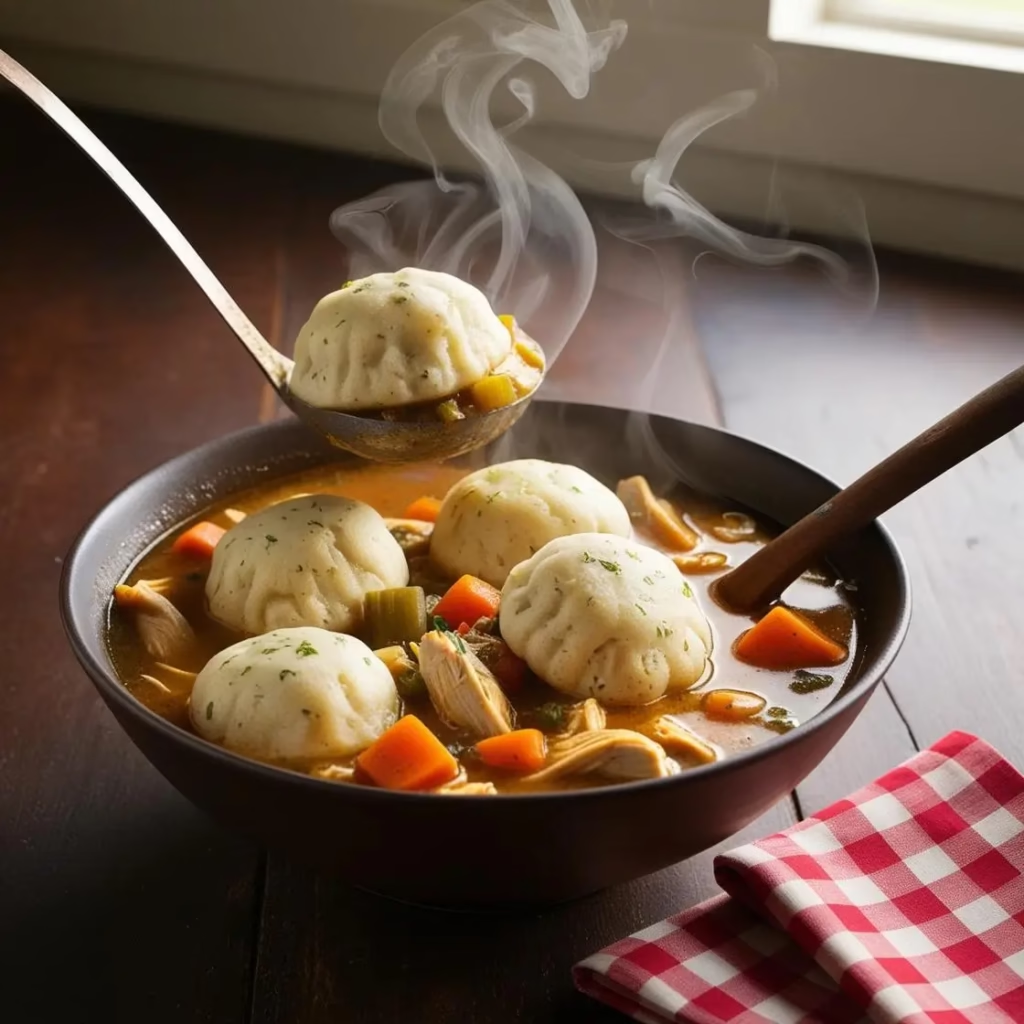
Ingredient Key for Perfect Bisquick Dumplings
Before we dive into the preparation, let’s examine the essential ingredients that make these Bisquick dumplings so special:
- Bisquick mix: The foundation of our recipe, providing the perfect balance of flour, leavening agents, and fat.
- Milk: Creates moisture and helps achieve that tender texture we’re looking for.
- Herbs and seasonings: Optional but highly recommended to elevate flavor – parsley, thyme, or black pepper work wonderfully.
The beauty of this recipe undoubtedly lies in its simplicity. Nevertheless, each ingredient plays a crucial role in creating those perfect, fluffy dumplings that we all crave.
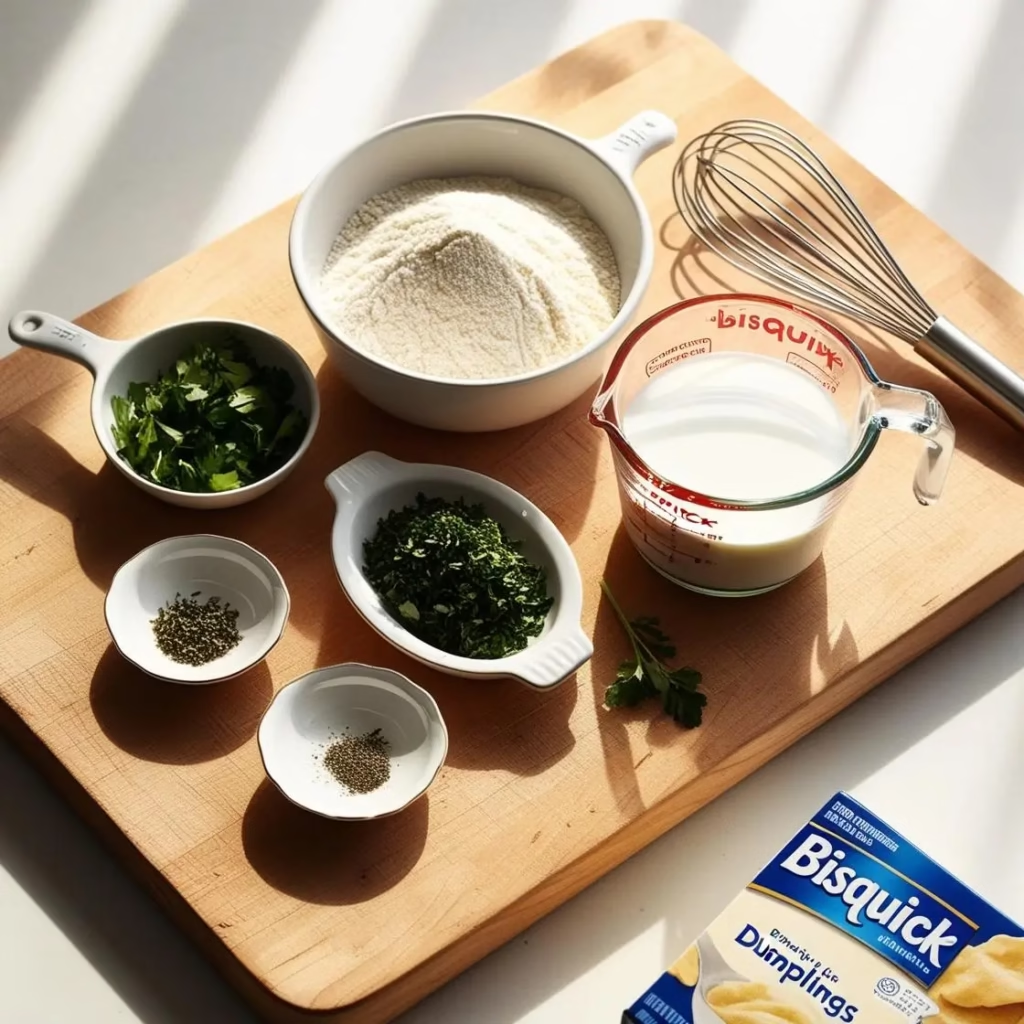
Step-by-Step Instructions for Bisquick Dumplings
- Prepare your soup or stew base: Before making the dumplings, ensure your soup or stew (chicken is traditional) is simmering and ready for the dumplings.
- Mix the dumpling batter: In a medium bowl, combine 2 cups of Bisquick mix with 2/3 cup milk. Stir gently until a soft dough forms. Don’t overmix – consequently, your dumplings might become tough.
- Drop the dumplings: Using a tablespoon, carefully drop rounded spoonfuls of the dough directly into the simmering (not boiling) liquid. As a result, you’ll have about 8-10 dumplings, depending on size.
- Cook covered: Immediately cover your pot with a tight-fitting lid. This traps the steam, which is essential for cooking the dumplings properly.
- Simmer without peeking: Allow the dumplings to cook for 15 minutes without removing the lid. Otherwise, you’ll release the steam needed for cooking.
- Check for doneness: After 15 minutes, insert a toothpick into the center of a dumpling. If it comes out clean, they’re ready to serve!
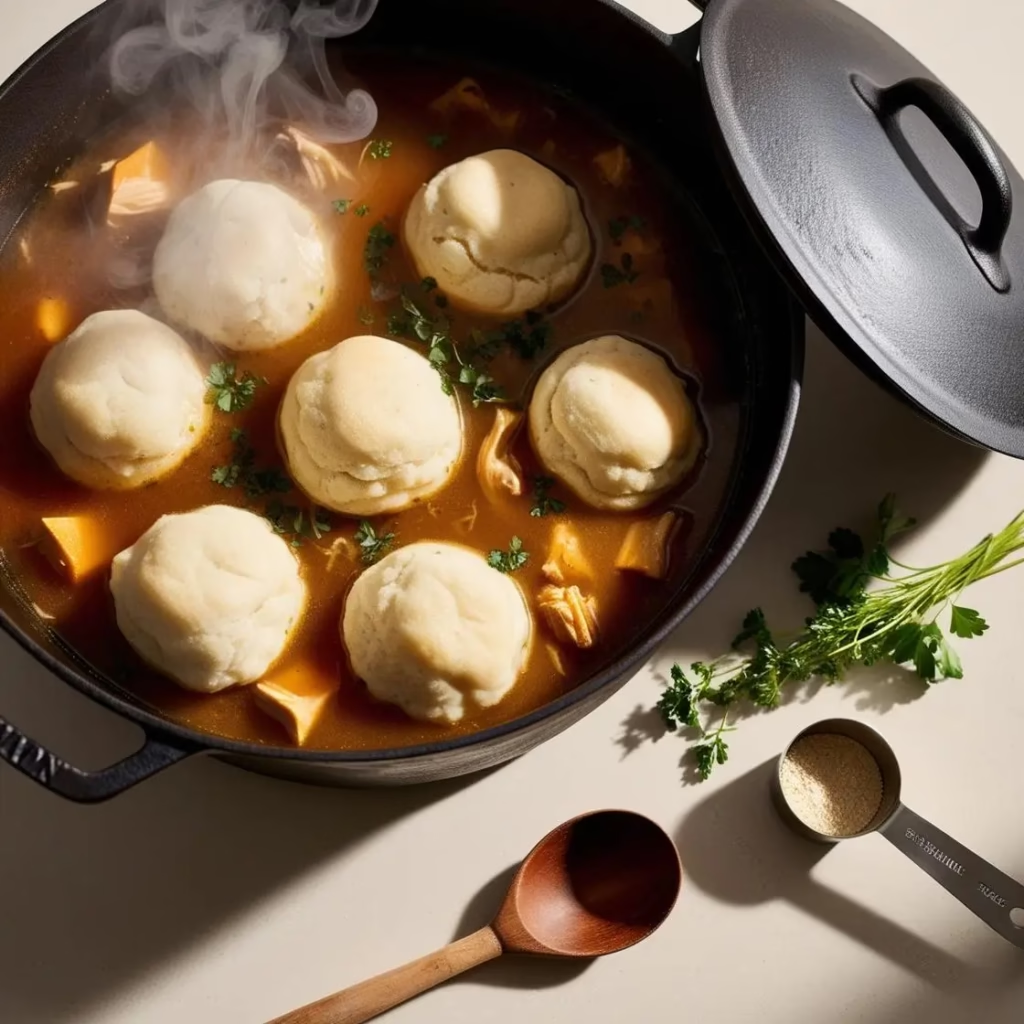
Tips for Dumpling Success
Throughout my years of making Bisquick dumplings, I’ve discovered several tricks that guarantee perfect results:
- Keep the liquid at a simmer, not a boil: Boiling too vigorously will cause the dumplings to break apart, whereas a gentle simmer allows them to cook evenly.
- Don’t overmix the batter: Similar to pancakes or biscuits, overmixing develops gluten, resulting in tough dumplings. Mix just until combined, and embrace the lumps!
- Resist the urge to peek: Opening the lid during cooking releases steam and drops the temperature, consequently leading to undercooked, gummy dumplings.
- Add herbs for extra flavor: Fresh or dried herbs mixed into the batter elevate these simple dumplings to new heights. Parsley, thyme, or chives are particularly complementary.
- Make sure your stew has enough liquid: The dumplings will absorb some liquid as they cook, so ensure you have enough in the pot before adding them.
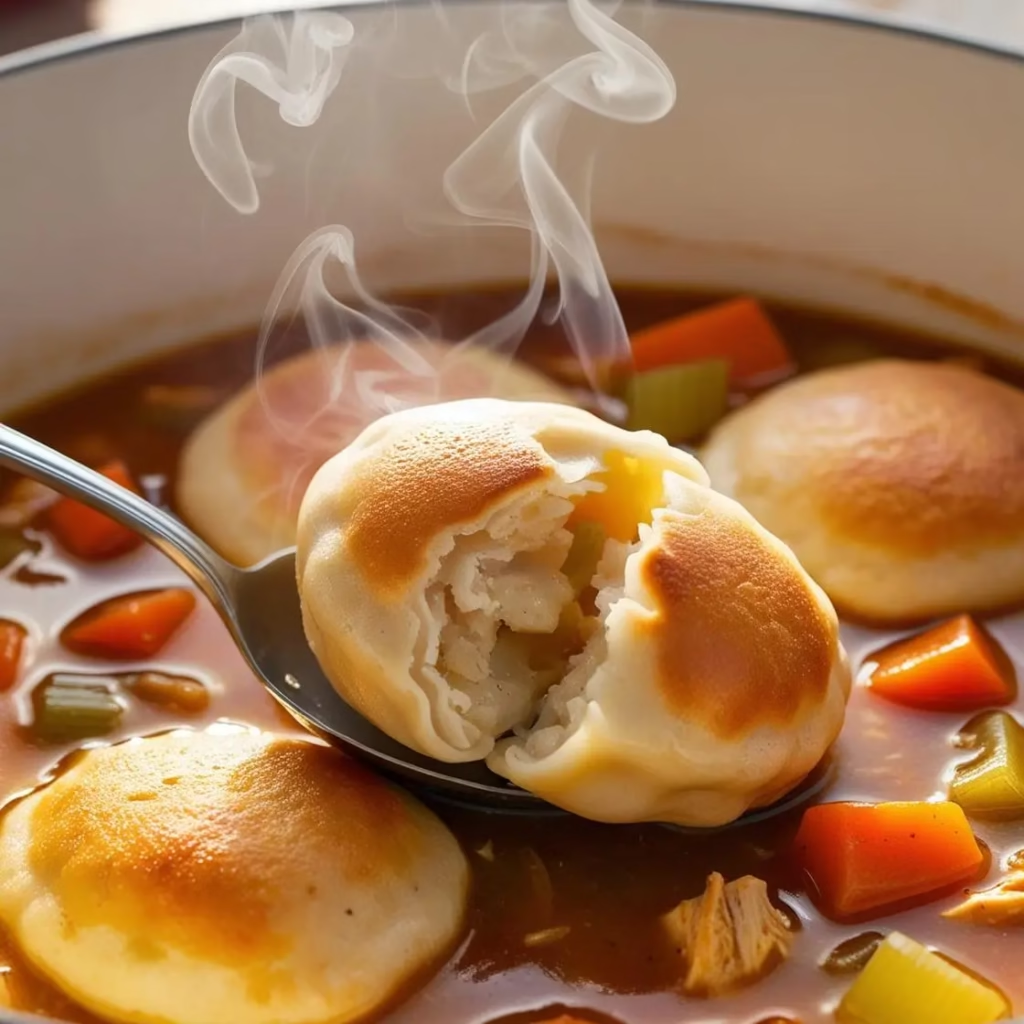
Storage and Reheating Information
Bisquick dumplings are best enjoyed fresh, undoubtedly at their peak when served immediately after cooking. However, if you find yourself with leftovers, they can be stored properly:
Store leftover stew with dumplings in an airtight container in the refrigerator for up to 3 days. The dumplings will absorb more liquid overnight, becoming softer but still delicious.
For reheating, gentle warming on the stovetop is preferable. Microwave reheating works in a pinch, but the texture may suffer slightly as a result. Add a splash of broth if needed to maintain moisture.
Freezing is possible but not ideal – the dumplings’ texture changes somewhat after thawing. Nevertheless, if freezing is necessary, use within 1 month for best quality.

Nutrition Information
While comfort food isn’t typically associated with health food, it’s still helpful to understand what’s in your Bisquick dumplings:
Per serving (2 dumplings, approximately):
- Calories: 160
- Protein: 4g
- Carbohydrates: 27g
- Fat: 5g
- Sodium: 450mg (varies based on the stew/soup base)
These values are estimates and may vary depending on exact measurements and additions.
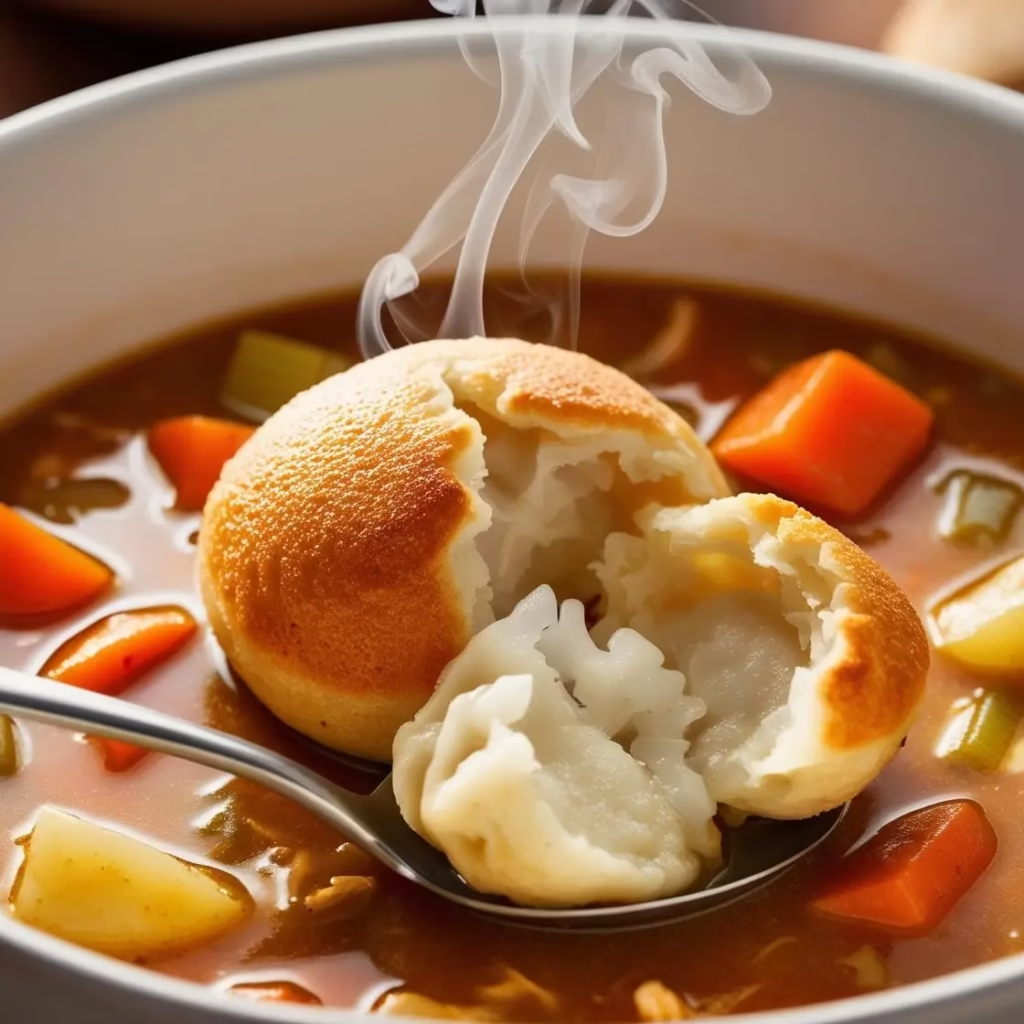
Similar Recipes You Might Enjoy
If you love these Bisquick dumplings, you might consequently enjoy these related recipes:
- Chicken and Dumplings Casserole: A deconstructed version with all the same comforting flavors.
- Herbed Drop Biscuits: Using the same Bisquick base but baked instead of steamed.
- Burger Bowl Recipe
- Fruit Cobbler with Bisquick Topping: A sweet application of similar technique.
Furthermore, you can transform the basic Bisquick dumplings recipe into cheese dumplings by adding 1/4 cup of shredded cheddar to the batter.
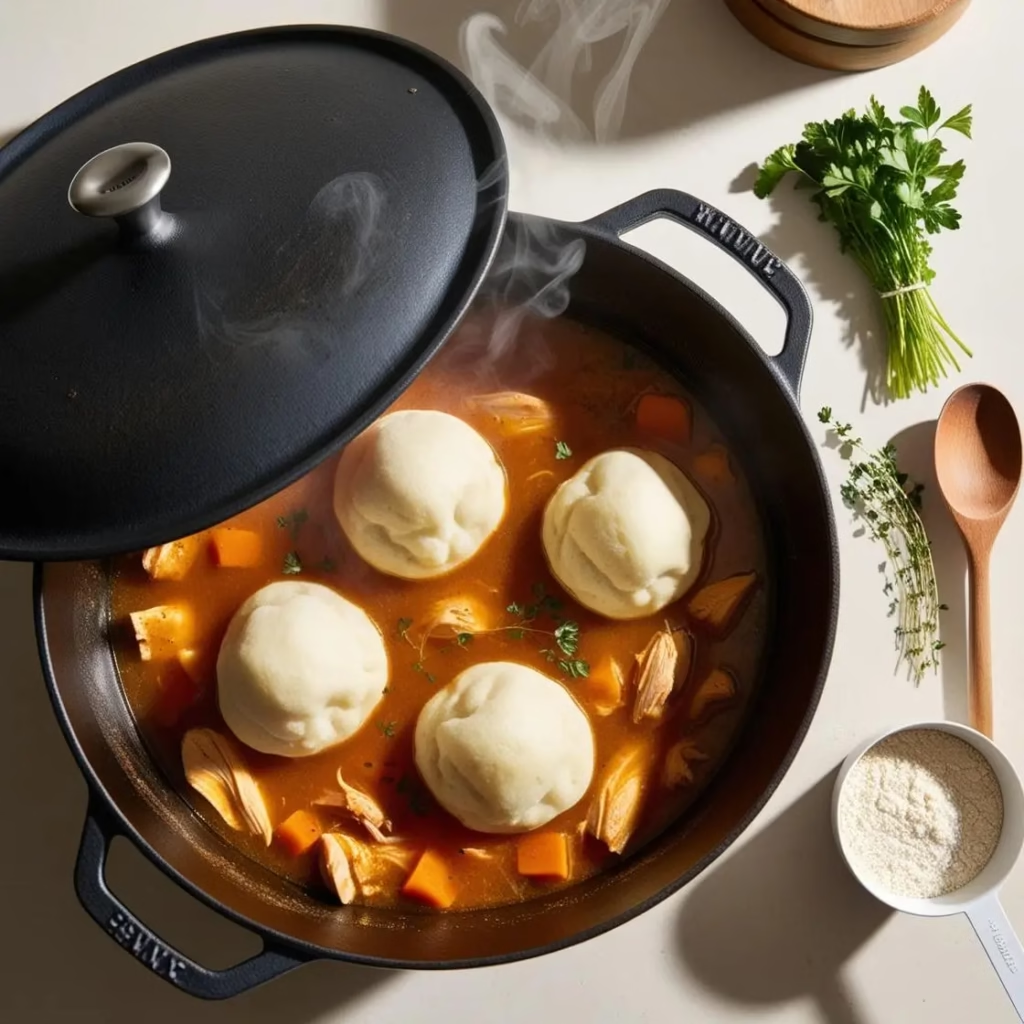
The humble Bisquick dumplings recipe proves that sometimes, the simplest foods provide the greatest comfort. This versatile, foolproof recipe has earned its place in countless family cookbooks across generations, and for good reason. With minimal ingredients and effort, you can create a meal that feels like a warm hug in a bowl.
Perhaps what makes this recipe truly special is its ability to connect us – to tradition, to family memories, and to the simple pleasure of good food. Therefore, the next time you’re craving comfort food, remember this Bisquick dumplings recipe. It’s more than just a recipe; it’s a piece of American culinary heritage worth preserving and sharing.
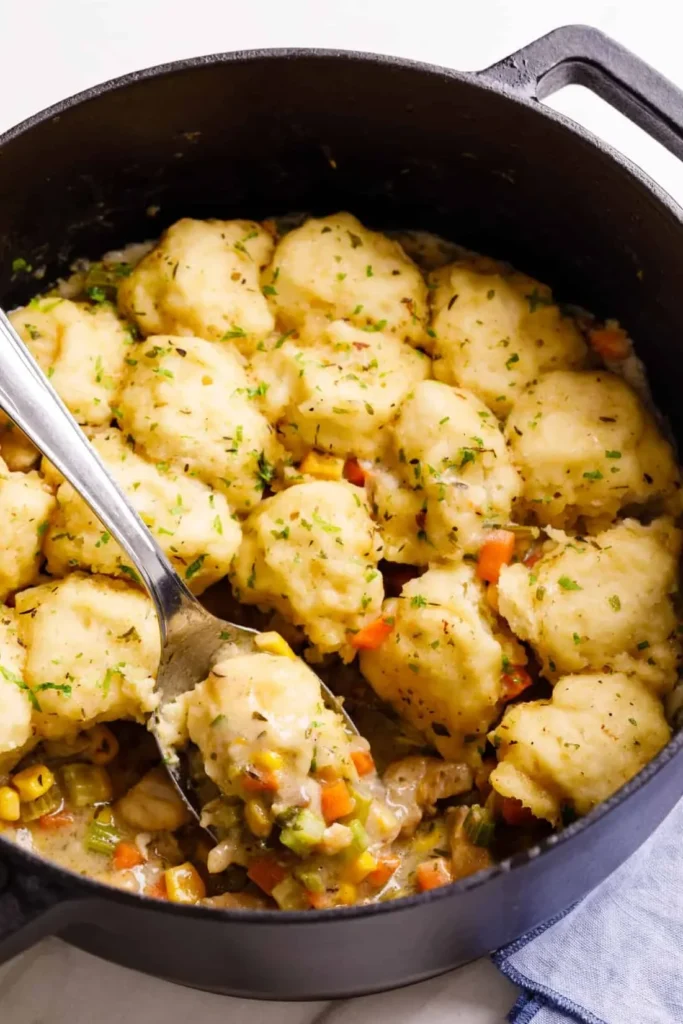
« How to Make Bisquick Dumplings Recipe : Quick, Easy, and Delicious »
Description
Discover the perfect Bisquick dumplings recipe that creates fluffy, tender dumplings every time. This foolproof comfort food classic transforms any soup or stew into a hearty, satisfying meal with minimal effort and maximum flavor. Learn all the tips and tricks for dumpling success!
Ingredients
Instructions
- Prepare your favorite soup or stew and bring it to a simmer.
- In a medium bowl, stir Bisquick mix and milk until soft dough forms.
- If using herbs or seasonings, gently fold them into the dough.
- Drop dough by tablespoonfuls onto simmering (NOT boiling) soup or stew.
- Cover tightly and cook over low heat for 15 minutes. DO NOT lift the lid during cooking.
- Test for doneness by inserting a toothpick into center of dumpling. If it comes out clean, dumplings are ready.
- Serve immediately for best texture and flavor.
Notes
- Ensure liquid is simmering, not boiling, before adding dumplings
Do not overmix the dough to keep dumplings light and fluffy
Leave adequate space between dumplings as they will expand during cooking
For larger batches, simply double all ingredients

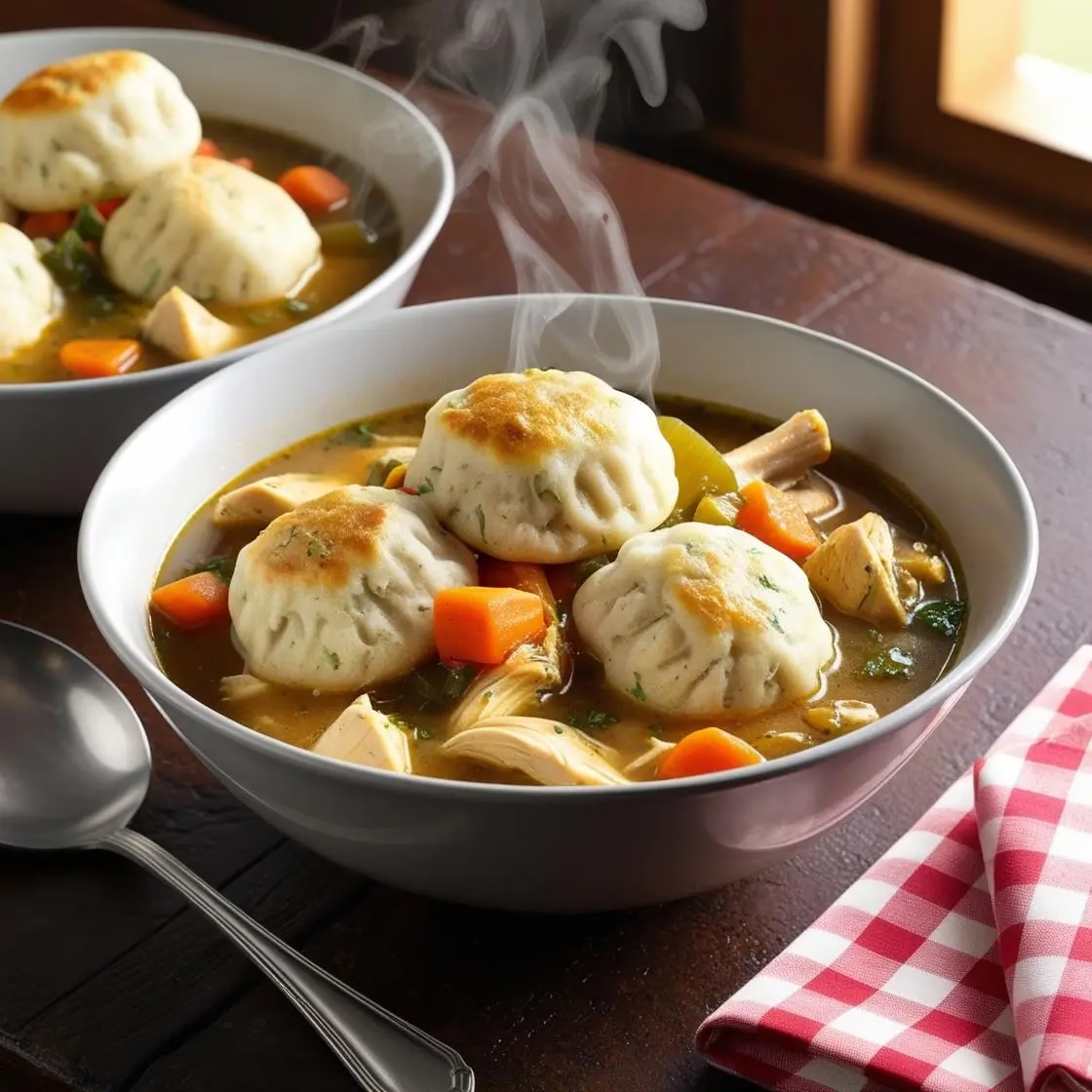
février 6, 2025 at 5:43 pm[…] something magical about dropping spoonfuls of Bisquick dumplings batter into a simmering pot of stew and watching them transform into fluffy, cloud-like pillows. […]